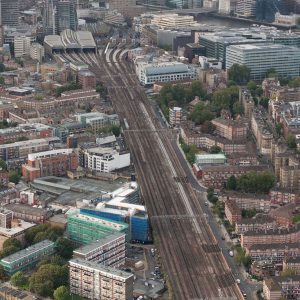Strategy sets out 20 year vision for London rail services
Posted: 22 December 2010 | | No comments yet
A long-term strategy for London’s railway has been unveiled, setting out the steps needed to cater for increasing demand for rail travel.
A long-term strategy for London’s railway has been unveiled, setting out the steps needed to cater for increasing demand for rail travel.
A long-term strategy for London’s railway has been unveiled, setting out the steps needed to cater for increasing demand for rail travel in and around the capital.
With the number of passengers travelling into London in the busiest hours set to grow by more than a third by 2031, Network Rail’s London and south east route utilisation strategy: draft for consultation identifies ways to boost capacity, improve journeys and increase connectivity across the region.
Produced in partnership with the rail industry, the Department for Transport and Transport for London, the strategy builds on existing plans to increase capacity on the region’s railway, including Crossrail, Thameslink, Reading remodelling, electrification to Newbury and Oxford, the Evergreen 3 project on the Chiltern line, the completion of the London Overground network as well as a major programme of train and platform lengthening on many routes into the capital.
Assuming these are implemented in full, the strategy concludes that overall peak capacity in the London suburban area will largely be able to cope with predicted passenger numbers in 2031, with the addition of some other key measures. These include extra commuter services between the Thames Valley and Paddington, additional tracks on the Lea Valley line and more trains on the Windsor lines into Waterloo. It also recommends further developing proposals for future schemes – for example a ‘Chelsea to Hackney line’ under the capital, extensions to Crossrail and improving rail services to Heathrow.
On a small number of routes into London it is clear that a new approach will be needed to meet forecast future demand. Conventional enhancements on these routes, such as train lengthening, timetable changes and infrastructure upgrades, become much more complex and costly within the lifetime of the strategy, so more extensive options – for example the building of entirely new lines – may be needed.
The situation is most pressing on the Great Eastern and South West main lines, with commuters on some outer suburban services facing severe overcrowding. Finding solutions here will require a broader debate, looking at how the railway benefits the wider economy, interacts with housing policy and can drive changes to travel patterns.
Paul Plummer, Network Rail’s director of planning and development said: “There is an economic imperative in publishing this strategy. Only by identifying the gaps remaining after committed schemes and working with the partners to agree long term solutions will our country be in a position to prepare for its future; to put the right transport infrastructure in place to support the businesses and commuters of tomorrow.
“For that reason, some of the conclusions in this report are stark. This strategy should act as the starting point for a wider discussion, looking beyond rail planning to housing policy, the ability of the railway to drive regeneration and changes to how we live, work and travel.
“London relies on rail to get more than two million people to and from work each day, and our strategy will provide the extra capacity needed to help the economy grow. Making the railway more affordable is essential, and we will continue to work together with the rest of the rail industry to reduce costs and deliver better value for passengers and freight.”
Today’s publication marks the start of a three month consultation on the draft strategy with key stakeholders. After taking feedback into consideration, Network Rail will publish the final strategy in summer 2011.
Download the executive summary.
Related organisations
Crossrail Ltd, Department for Transport (DfT), Network Rail, Transport for London (TfL)



